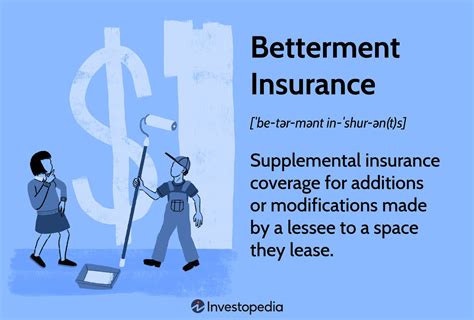Learn about the benefits, coverage options, and eligibility criteria for group term life insurance and how to enroll in this essential coverage.
Understanding Group Term Life Insurance
Contents
Group term life insurance is a type of life insurance coverage offered to a group of people, usually employees of a company or members of an organization. This type of insurance provides coverage for a specified period of time, generally one year. The coverage amount is typically a multiple of the individual’s salary or a flat amount determined by the employer. Group term life insurance is an affordable way for employers to provide life insurance benefits to their employees.
One of the key benefits of group term life insurance is that it provides financial protection for the employee’s family in the event of their untimely death. The death benefit can be used to cover funeral expenses, pay off outstanding debts, or provide financial support for the family. Additionally, group term life insurance is often offered as part of an employee benefits package, making it a valuable perk for attracting and retaining top talent.
Eligibility for group term life insurance is typically based on an individual’s status as an employee or member of the organization offering the coverage. In most cases, there are no medical exams or health screenings required to enroll in group term life insurance, making it an accessible option for individuals with pre-existing health conditions.
Employers have the flexibility to choose the coverage options for their group term life insurance plan, including the coverage amount, beneficiary designations, and additional features such as accidental death and dismemberment coverage. It’s important for employers to carefully consider the needs of their employees when selecting the coverage options to ensure that the plan meets the unique needs of the group.
Enrolling in group term life insurance is a straightforward process for eligible employees. Typically, enrollment periods are offered during specific times of the year or upon hiring, and employees are required to complete a simple application to enroll in coverage. Once enrolled, employees will receive a certificate of insurance outlining the terms, coverage amount, and beneficiary information for their group term life insurance policy.
Benefits of Group Term Life Insurance
Group term life insurance offers numerous advantages for both employers and employees. One of the primary benefits is the affordability of group term life insurance, as the cost of coverage is often lower than individual life insurance policies. This makes it an attractive option for employers looking to provide valuable benefits to their employees without incurring high expenses. Additionally, group term life insurance often comes with convenient enrollment processes, as employees are automatically included in the coverage without the need for extensive underwriting.
Another advantage of group term life insurance is the flexibility it offers in terms of coverage levels. Employers can choose to provide varying amounts of coverage based on factors such as employee salary or position within the company. This allows for a customized approach to benefits administration, ensuring that employees receive the appropriate level of coverage for their individual needs.
Furthermore, group term life insurance typically includes portability options, which allow employees to maintain their coverage even if they leave their current job. This can provide peace of mind for employees who may be concerned about losing their life insurance benefits when transitioning to a new employer. Additionally, group term life insurance often does not require medical exams or individual underwriting, making it an accessible option for employees with pre-existing health conditions.
Overall, the benefits of group term life insurance make it a valuable asset for both employers and employees. Its affordability, convenient enrollment processes, flexibility, and portability options make it a practical and attractive choice for businesses seeking to provide comprehensive benefits to their workforce.
Eligibility for Group Term Life Insurance
Group Term Life Insurance is a valuable benefit offered by many employers, providing financial security and peace of mind to employees and their families. However, not everyone is automatically eligible for this coverage. There are certain requirements that must be met in order to qualify for Group Term Life Insurance.
First and foremost, eligibility for Group Term Life Insurance is typically restricted to employees of a company or organization that offers this benefit. In some cases, employees may also be able to extend coverage to their spouses and dependent children.
In addition to being an employee of a participating organization, there may be other eligibility requirements such as minimum hours worked per week or length of employment. It’s important to review the specific eligibility criteria outlined in the Group Term Life Insurance policy provided by the employer.
Individuals who meet the eligibility requirements for Group Term Life Insurance may be required to enroll during a specified enrollment period, typically when they first become eligible for the benefit or during an annual open enrollment period. Failure to enroll during the designated period may result in the individual being unable to obtain coverage until the next enrollment period, unless they experience a qualifying life event.
It’s essential for employees to fully understand the eligibility requirements and enrollment process for Group Term Life Insurance in order to take advantage of this valuable benefit and provide financial protection for themselves and their loved ones.
Coverage Options for Group Term Life Insurance
When it comes to group term life insurance, there are various coverage options available to suit the needs of different individuals and families. The most common coverage options include basic life insurance, supplemental life insurance, and dependent life insurance. Each of these options offers different levels of coverage and can be tailored to meet specific needs.
Basic life insurance provides a lump sum payment to the beneficiary in the event of the insured individual’s death. This coverage option typically offers a set amount of coverage, often based on a multiple of the employee’s annual salary. It is a foundational level of coverage that provides financial protection for the insured’s family in the event of their passing.
Supplemental life insurance, on the other hand, allows employees to purchase additional coverage beyond the basic life insurance provided by their employer. This option provides an opportunity for individuals to increase their coverage to better meet their specific needs. Employees may have the option to purchase supplemental coverage for themselves as well as their dependents.
Dependent life insurance is designed to provide coverage for the insured individual’s dependents, such as their spouse and children. This option can help ensure that the insured’s family members are financially protected in the event of their passing. It is important to carefully consider the amount of coverage needed for dependents and select an appropriate plan to provide for their needs.
Overall, the coverage options for group term life insurance provide flexibility and peace of mind for both employees and their families. By understanding the different options available, individuals can select the right level of coverage to meet their specific needs and ensure financial protection for their loved ones.
How to Enroll in Group Term Life Insurance
Enrolling in a group term life insurance plan is a simple and straightforward process. The first step is to check if you are eligible for coverage. Usually, this type of insurance is offered through employers, so you will need to be an employee of a company that provides this benefit. Once you have confirmed your eligibility, you can proceed to the enrollment process.
Many employers have open enrollment periods during which you can sign up for group term life insurance. During this time, you will need to fill out the necessary forms provided by your employer and designate your chosen beneficiaries. It is important to carefully review the coverage options and select the appropriate amount of coverage based on your individual needs.
Some employers also offer the option to increase your coverage or add additional benefits, such as accidental death and dismemberment insurance, during the enrollment period. Be sure to take advantage of these offerings if they are available to you. Once you have completed the enrollment forms, your coverage will typically go into effect on the specified enrollment date, or at the beginning of the next plan year.
If you miss the initial enrollment period, you may still have the opportunity to sign up for group term life insurance during a special enrollment period, such as after experiencing a qualifying life event like marriage or the birth of a child. In some cases, you may be required to provide evidence of insurability, such as undergoing a medical exam or answering health-related questions.













